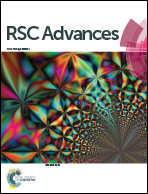Structures, preparation and applications of titanium suboxides
Abstract
The crystal structure, physical and chemical properties, and applications of titanium suboxides (TinO2n−1, n = integer greater than one) have recently attracted tremendous attention. In this paper, the structure and physical properties of titanium suboxides are summarized, and recent progress in their synthesis methods and applications in catalysis, environmental, electronic and optoelectronic devices and batteries is reviewed. The presence of two Ti3+ and (n − 2)Ti4+ provides TinO2n−1 with several possible configurations of cations in the crystal, various charge-ordered states and electronic structures which lead to their versatile physical properties, such as conductivity, magnetic and optical properties. A series of TinO2n−1 has been synthesized by redox reduction of different titanium sources of TiO2 and other raw materials. Notably, Magnéli phase titanium oxides (typically n is between 4 and 6) have played very important roles in Pt-catalyst support, organic degradation, coatings and supports in various electronic and optoelectronic devices. Undoubtedly, titanium suboxides are expected to become indispensable materials in future.



 Please wait while we load your content...
Please wait while we load your content...